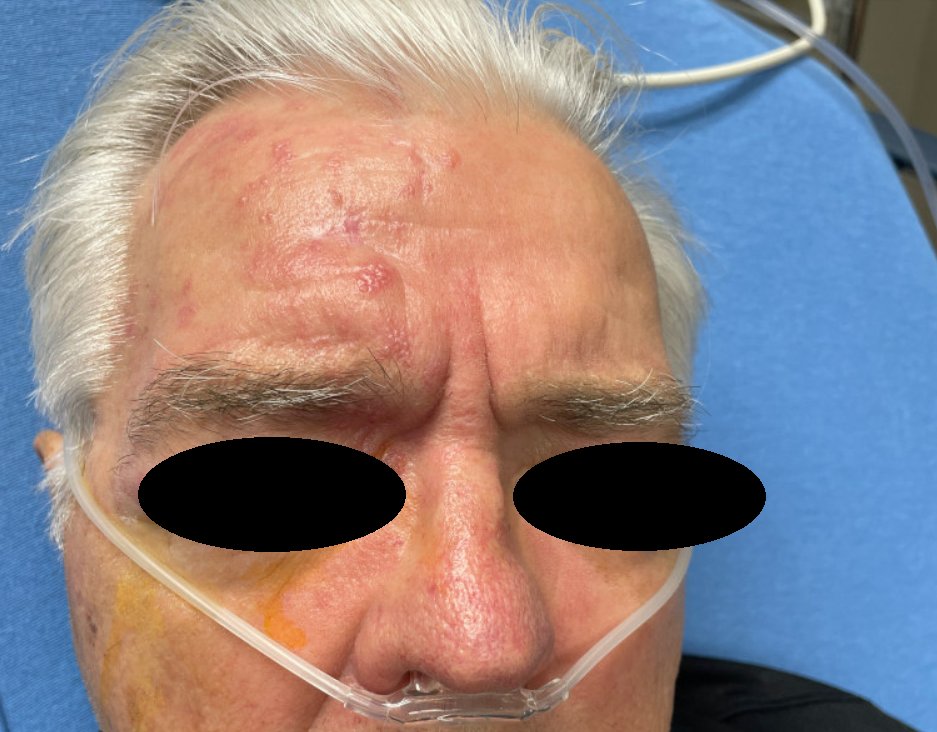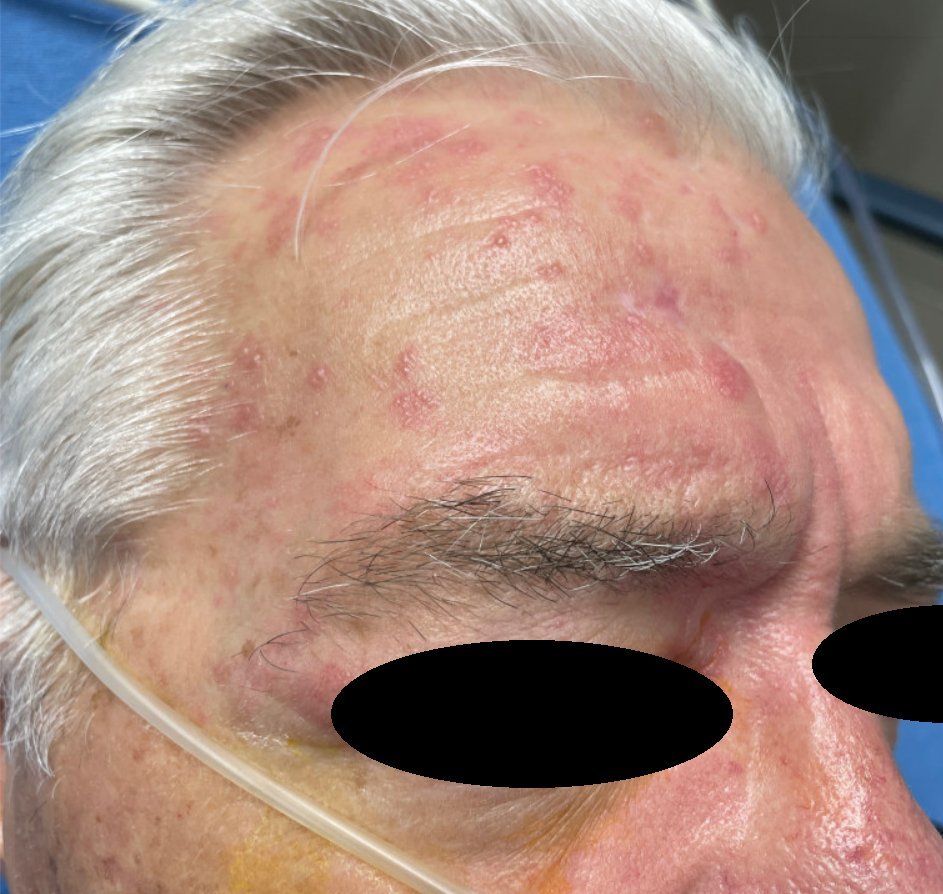Case Presentation: An 83-year-old male with type 2 diabetes (hemoglobin A1C of 10.9) and recurrent herpes zoster presented with 3 days of worsening unilateral facial pain, headache, rash, and nausea. Of note, the patient had been vaccinated with the live varicella zoster virus (VZV) vaccine (Zostavax) 3 years prior. Physical exam revealed a right sided vesicular facial rash in the V1 distribution not crossing the midline (Figure 1), and the patient was started on treatment with intravenous (IV) acyclovir for VZV ophthalmicus. A lumbar puncture revealed clear cerebrospinal fluid (CSF) with 85 cells (67% lymphocytes), glucose of 153 mg/dL, and protein of 180.7 g/dL. CSF culture isolated no organisms; CSF PCR for VZV was positive. Over the course of the next week in the hospital, the patient’s pain and headaches persisted, but the rash improved. The patient received two weeks of IV acyclovir inpatient and was discharged on pregabalin for severe post-herpetic neuralgia. In the month following the initial hospitalization, the patient was re-hospitalized twice for 5 days and 12 days respectively for post-herpetic neuralgia and delirium.
Discussion: The annual incidence of herpes zoster is 0.3-0.5% in the population. 10-15% of these cases involve the eye; 5.5% of cases involving the eye progress to have central nervous system involvement. In this case, we would first like to highlight how uncontrolled diabetes is an often-underappreciated immunocompromised state in hospital medicine, and likely contributed to the contraction and progression of varicella zoster in this patient. Second, we would like to highlight the difference between the two varicella zoster vaccines: the live vaccine (Zostavax), and the recombinant vaccine (Shingrix). Our patient was immunized with the live vaccine, which reduces VZV incidence by 51%. The recombinant vaccine, in contrast, reduces VZV incidence by 97.2% in those age 50 years and older, and 90% in those 70 years and older. Finally, we would like to recognize VZV as an under-recognized cause of meningoencephalitis – it is more common than herpes simplex virus (HSV), but less often tested for. It is important to recognize signs of meningoencephalitis early and have a low threshold for obtaining a lumbar puncture and CSF testing for VZV in such cases in the hospital.
Conclusions: We present this case to feature an uncommon but important complication of VZV. We would like to highlight the importance of recognizing uncontrolled diabetes as an immunocompromised state, and the importance of having a high degree of suspicion for VZV meningoencephalitis to guide early treatment and recovery.


